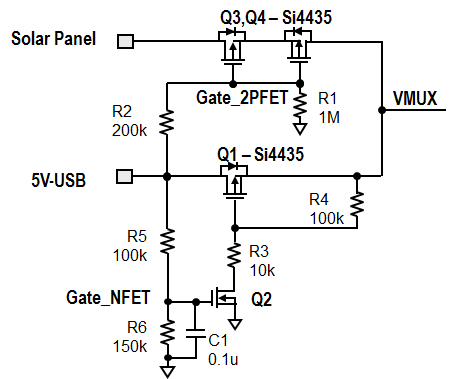We are using the BQ25895 and have an issue I can't figure out. When powered from VBAT (no VBUS plugged in) the output on SYS is great (4.2V) and the system is drawing 40ma of current. Then I power the device with VBUS only (NO VBAT hooked up) the SYS output switches off and on. In other words it won't maintain output. If I remove the load, there is voltage at SYS consistently with no cycling. It seems to be a current limit problem, but is so little current being drawn, it doesn't make sense. I'm using the standard schematic from the reference design below.
Project Title: USB-C DFP + 5V2A Power Bank With Input Fast Charger Reference Design
I have I2C communications available if I need to change something, but I thought this chip should operate standalone? Do I need to set a seeting on the chip? I have ILIM at 260 ohm as directed in the reference design.
What am I missing?


